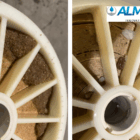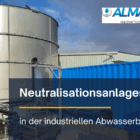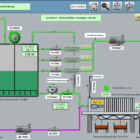Aeration is a central process in industrial water treatment and wastewater treatment and is mainly used to introduce oxygen into the water or wastewater. This oxygen is required by aerobic microorganisms to break down organic compounds in biological purification processes such as the activated sludge process decomposition. Aeration not only ensures the introduction of oxygen, but also contributes to the mixing of the water to ensure an even distribution of nutrients and microorganisms.
Table of contents
Technical background to ventilation
The oxygen input is a limiting factor for many biological purification processes, as the microorganisms require oxygen for the biological degradation of organic compounds. In order to achieve optimum purification performance, a sufficient amount of oxygen must be continuously introduced into the system. Aeration usually takes place in aeration tanks or in reactors as part of biological water and wastewater treatment processes.
There are various types of aeration systems that differ in terms of their oxygen transfer efficiency and their specific suitability for different areas of application:
Surface aeration: In surface aeration, air is brought to the surface of the water by mechanical movement of the water. Typical systems are surface aerators or submersible aerators, which bring the water into contact with the atmosphere and thus introduce oxygen. This technology is particularly useful in aeration tanks of municipal sewage treatment plants.
Fine bubble pressure aeration: Air is introduced into the water in the form of fine bubbles via aeration diffusers or aeration lances. The small bubbles have a large surface area and therefore enable very efficient oxygen transfer. This process is more energy efficient and is often used in industrial applications, especially when precise control of the oxygen content is required.
Turbine aeration: With turbine aeration, oxygen is introduced into the water via rotating elements. This technology creates both good mixing and efficient oxygen distribution throughout the pool.
Venturi ventilation: This technology uses the Venturi effect, in which air is drawn in through the acceleration of a liquid in a constricted nozzle and introduced into the liquid. This method is particularly suitable for confined spaces and provides an efficient oxygen supply.
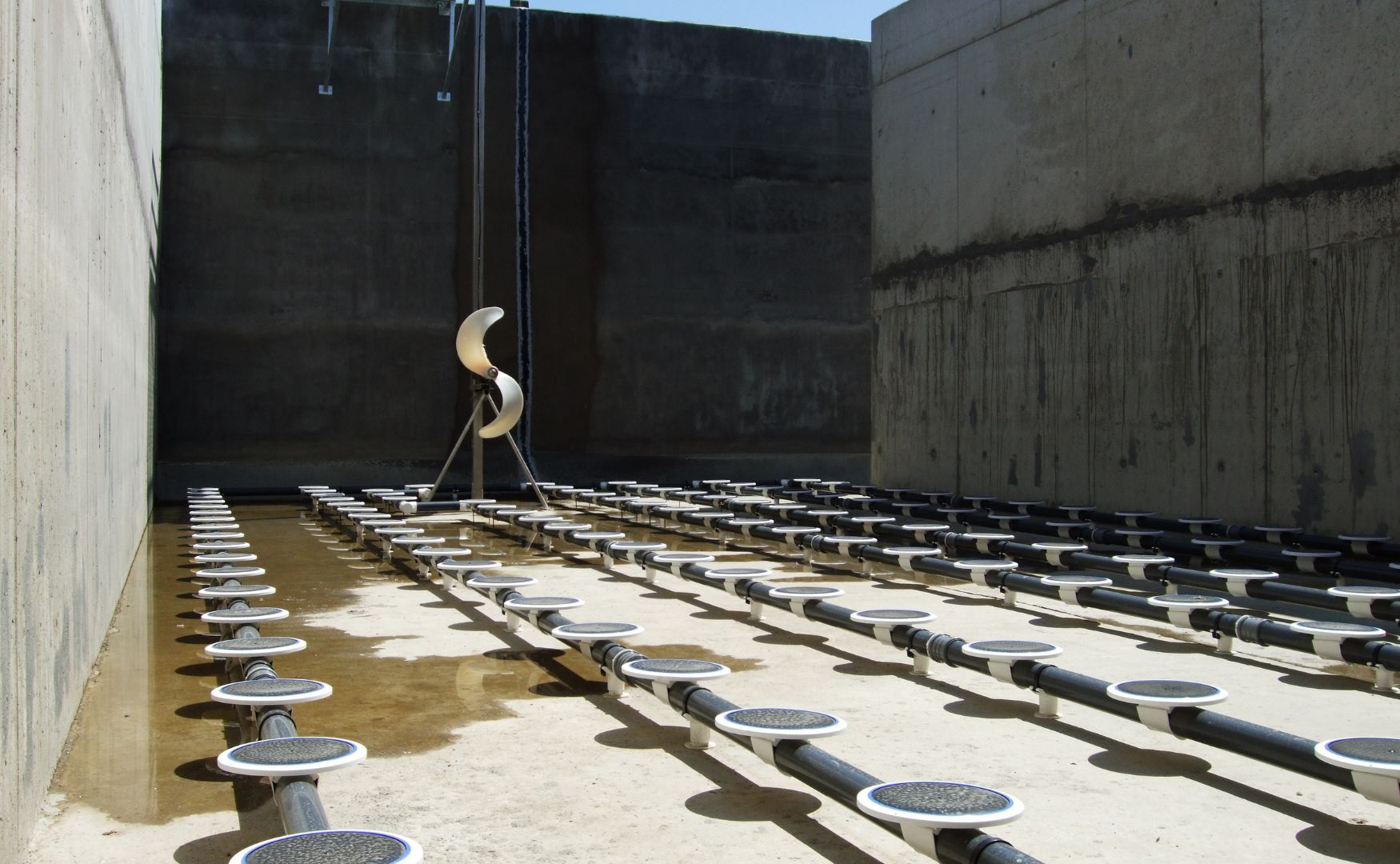
Photo: Aeration system in the activated sludge tank of the ALMA BHU BIO system
How ventilation works in practice
Aeration plays a decisive role in aerobic biological purification processes in which microorganisms break down organic substances in the presence of oxygen. Oxygen is required both for the metabolic process of the microorganisms and for the oxidative degradation processes of organic substances. Without a sufficient supply of oxygen, biological degradation would be inefficient or come to a complete standstill.
In practice, the oxygen input through aeration is controlled in various ways:
Oxygen content in the water: The oxygen content in the water or wastewater must be kept constant at around 2-4 mg/l to ensure optimum microbial activity. Too little oxygen can lead to anaerobic conditions, which can slow down the decomposition process and lead to odor problems.
Oxygen transfer rate: The rate of oxygen transfer depends on the size of the bubbles, the contact time between water and air as well as the temperature and pressure. Oxygen dissolves less well in warm water, for example, so that more intensive aeration is required at higher temperatures.
Energy management: Aeration is one of the most energy-intensive processes in wastewater treatment. Efficient aeration systems and the targeted use of modern control technologies to automatically adjust the oxygen input rate to demand help to minimize energy consumption.
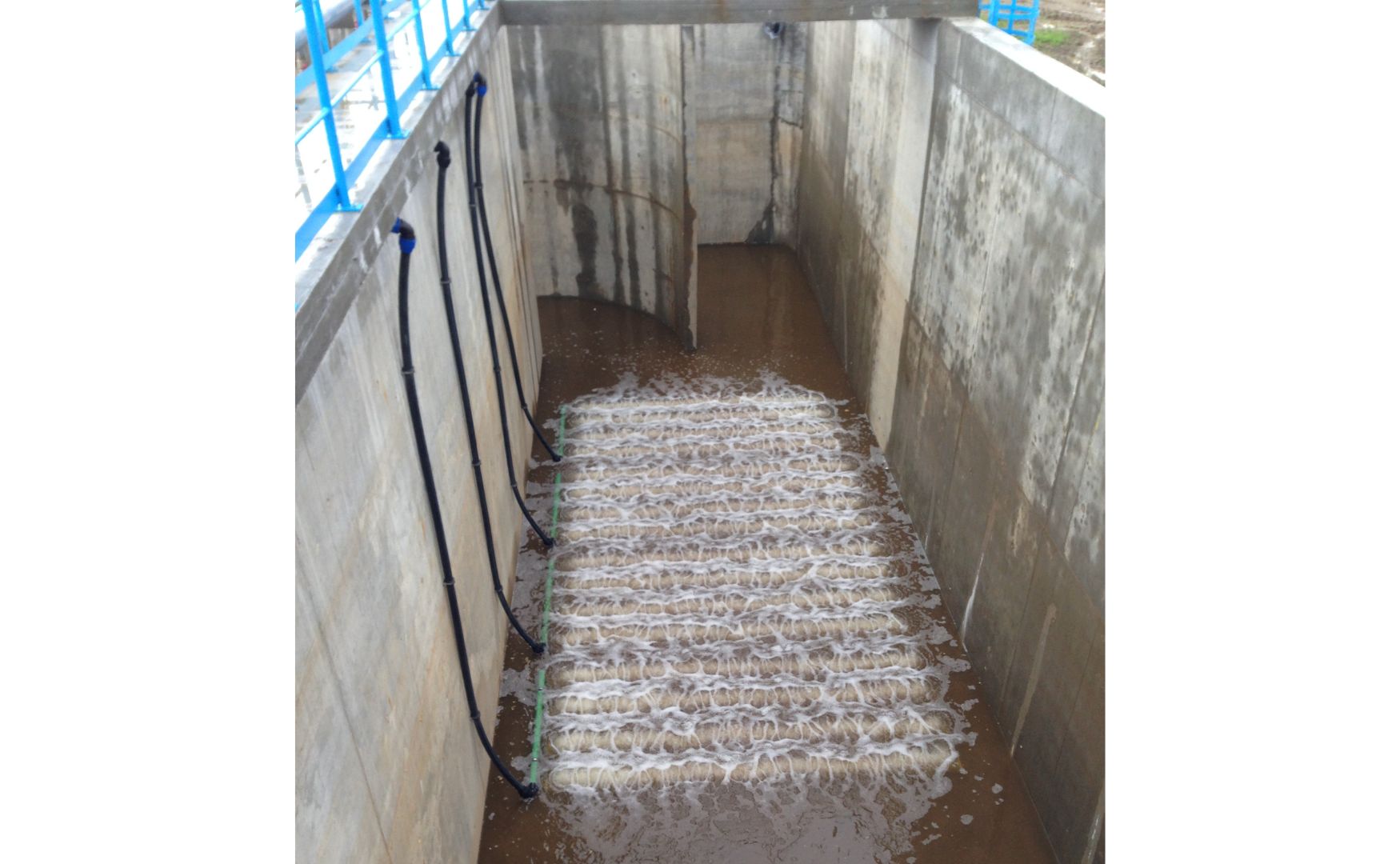
Photo: Membrane aerator (process: ALMA BHU BIO)
Application of ventilation in various industries
Aeration technology is of central importance in many industries, as it is not only used in wastewater treatment, but also in industrial process water treatment and water purification:
Municipal wastewater treatment: In municipal wastewater treatment plants, aeration is used to supply the activated sludge processes in order to break down organic impurities and remove nitrogen. Depending on the volume and composition of the wastewater, the aeration rate is adjusted to ensure the best possible treatment performance.
Food industry: The food and beverage industry produces wastewater with a high organic load, which is treated with the help of aeration in biological reactors. Precise control of the oxygen input is necessary here in order to optimize biological degradation and ensure stable water quality.
Chemical industry: Aerobic reactors with aeration are used in chemical production and the pharmaceutical industry to break down specific organic compounds. Here, aeration not only supports microbial degradation, but also ensures process stability by maintaining a constant reactor environment.
Water treatment and water recycling: In water treatment, aeration is also used to remove iron, manganese and other dissolved gases. In the reverse osmosis and other membrane processes pretreatment of water by aeration is often used to oxidize impurities and reduce biofouling of the membranes.
Advantages of ventilation
Effective oxygen transfer: Aeration ensures an efficient supply of oxygen, which is essential for the biodegradation of organic impurities.
Promotion of microorganism activity: Aeration creates optimum conditions for aerobic microorganisms, which use the nutrients present in the wastewater to break down organic substances.
Process stability: The targeted control of the oxygen supply ensures consistent process stability in biological reactors, which contributes to continuous cleaning performance.
Versatility: Aeration systems can be used in various industrial applications, from waste water treatment to process water treatment and water purification in drinking water systems.
Challenges and optimization of ventilation
High energy consumption: Aeration is one of the most energy-intensive processes in water treatment. It is therefore important to use energy-efficient technologies and control systems to reduce energy consumption.
Optimizing the oxygen supply: Insufficient aeration can lead to anaerobic conditions and reduced cleaning performance, while over-aeration drives up energy consumption. Automated control systems and intelligent sensors are required here to adjust the oxygen content precisely to requirements.
Maintenance of aeration systems: Aeration elements such as diffusers and aerators can be affected by deposits or biofouling, which reduces efficiency. Regular maintenance is therefore necessary to ensure smooth operation.
Conclusion
Aeration is an essential component of biological wastewater and water treatment. It provides the necessary oxygen input to support microorganism activity and efficiently reduce the organic load in the water. Despite its high energy requirements, aeration remains an indispensable technology for the biodegradation of pollutants and ensuring process stability in a wide range of industries. By selecting suitable aeration systems and the targeted use of control technologies, oxygen input can be optimized and energy efficiency improved.


